This week our team joined forces with the Navy Marine Ecology Consortium (NMEC) to monitor the rocky intertidal habitats on the most westerly of the islands, San Nicolas. Throughout our time, we have witnessed some pretty extraordinary species both terrestrially and aquatically. Continue along as we share some of favorite characters.
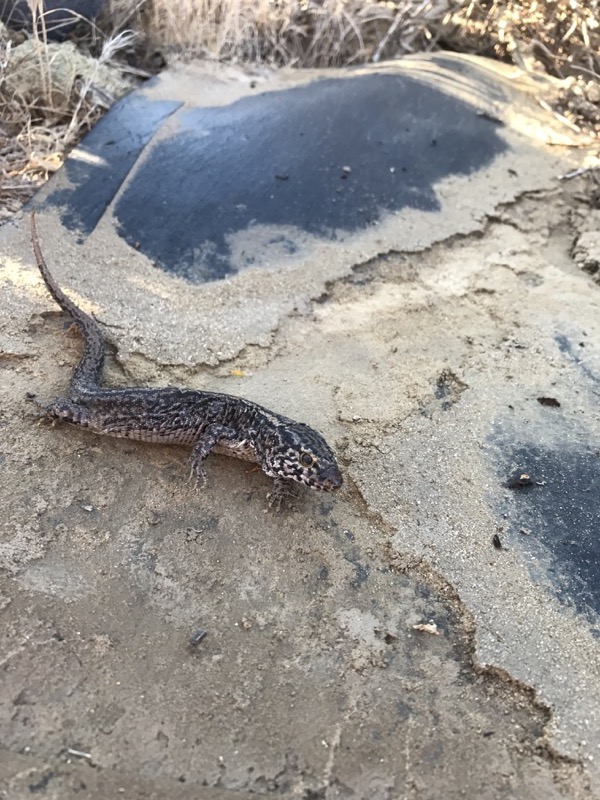
Photo credit: NPS/Stephanie Root
Island Night Lizard – Xantusia riversiana
Contrary to what their name suggests, the Island Night lizards are active during the day. These lizards can come in patterns as diverse as their landscape, both in color and form. Ranging in size from 2-4 inches, they live a relatively sedentary life feeding on small insects and plants. Island Night lizards can live up to 25 years and give birth to live young, making them unique amongst reptiles. An endemic species to the Channel Islands, these lizards are found on only three of the islands (San Clemente, San Nicolas, and Santa Barbara) and nowhere else in the world. They are considered a “Threatened” species due to habitat alteration and predation in their intimately small home range.
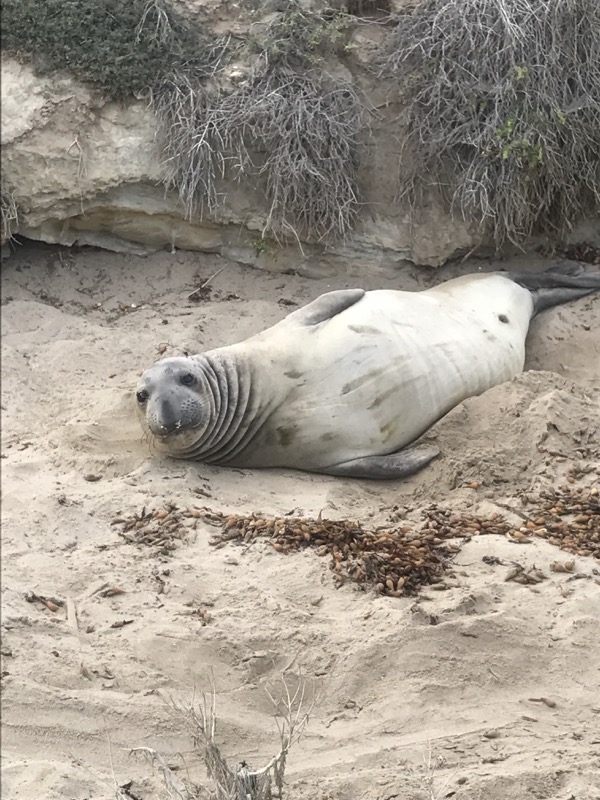 Photo credit: NPS/Nicole Ornelas
Photo credit: NPS/Nicole OrnelasNorthern Elephant Seals – Mirounga angustirostris
During the winter season it is not uncommon to share our field sites with these gray behemoths. Claiming the title as the second largest seal in the world (males: 5,000 lbs. females: 1,700 lbs.), the Northern Elephant Seal derives its name from the trunk-like proboscis (snout) found on males of the species. Ranging from the Aleutian Islands to Baja California, the Northern Elephant Seals stop off in the Channel Islands to breed and wean their pups (called weanies). Despite being nearly hunted to extinction in the 1800’s, the Northern Elephant Seal populations now flourish. They are a true testament to the power of conservation with a current estimated population of 170,000 individuals.
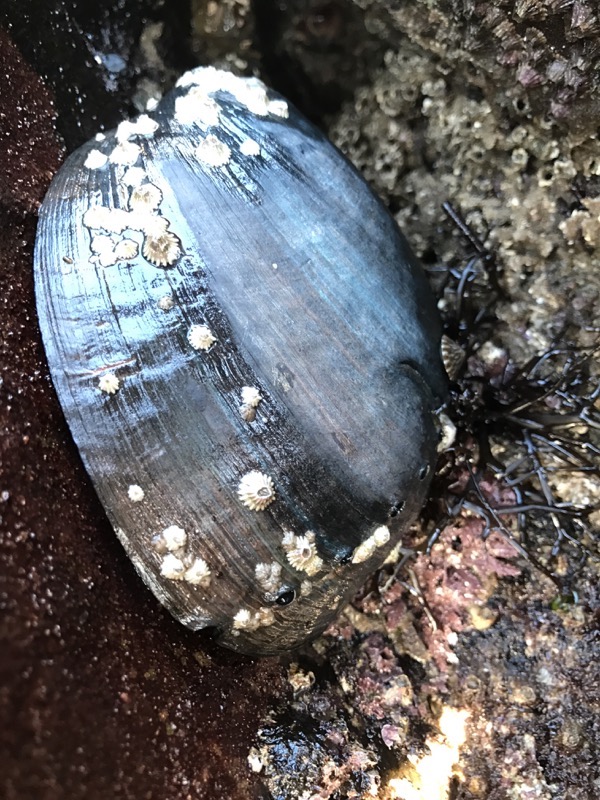 Photo credit: NPS/Nicole Ornelas
Photo credit: NPS/Nicole OrnelasBlack Abalone – Haliotis cracherodii
Prior to the overharvesting and withering syndrome that decimated populations of the seven species of abalone known to California, Black Abalone were said to have covered the rocky intertidal like rocks. Sadly, this is no longer the case. However, for this species in particular, San Nicolas Island provides a unique snapshot of a time long passed. Approximately 4-8 inches in size, these large marine gastropods still thrive throughout many of the shallow intertidal benches on the island. Black Abalone are herbivores and consume various species of algae and kelps. Take of Black Abalone, along with the 6 other species, is illegal south of Point Conception, CA. As of 2009, they remain listed as “Endangered” by the Endangered Species Act (ESA).
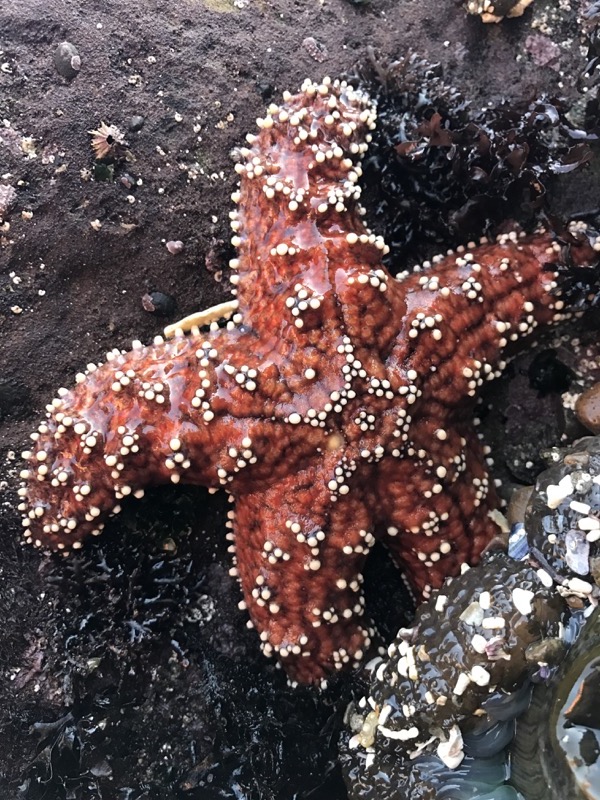 Photo credit: NPS/Nicole Ornelas
Photo credit: NPS/Nicole OrnelasOchre Sea Stars – Pisaster ochraceus
Found in crevices and around rocky outcrops, the orange and purple coloration of the Ochre Sea Star makes it a highly conspicuous resident of the Intertidal Zone. However, due to the 2013 onset of Sea Star Wasting Syndrome, they have become a rare sight throughout the western seaboard. Even here, on an island as remote as San Nicolas, numbers are few. Considered to be a “keystone species,” they can have a large influence on the communities around them. Consuming mainly mussels and urchins, ochre stars pave the way for others to survive. Little is known about Sea Star Wasting Syndrome, but scientists are working hard to uncover the mysteries behind these severe declines.
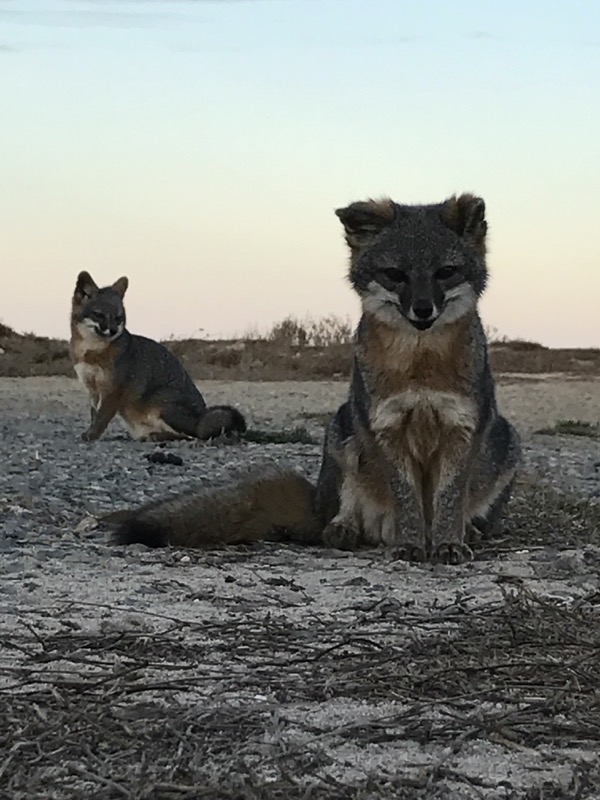 Photo credit: NPS/Nicole Ornelas
Photo credit: NPS/Nicole OrnelasIsland Fox – Urocyon littoralis
As dusk settles across San Nicolas, perhaps the most charismatic of the island’s inhabitants begins to emerge. Roughly the size of a small house cat, the Island Fox can be only found on six of the eight Channel Islands. These are the largest of the mammals in residence, with each subspecies being exclusive to their particular island. Due to development and already small population numbers, the Island Foxes were up until recently considered close to extinction. However, with highly organized and successful conservation efforts, many of these island populations are recovering.
